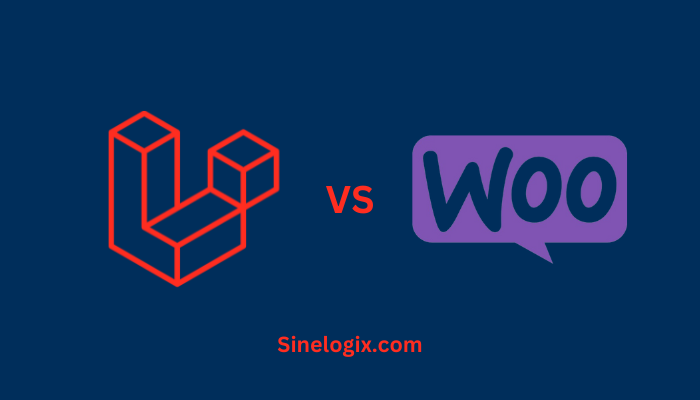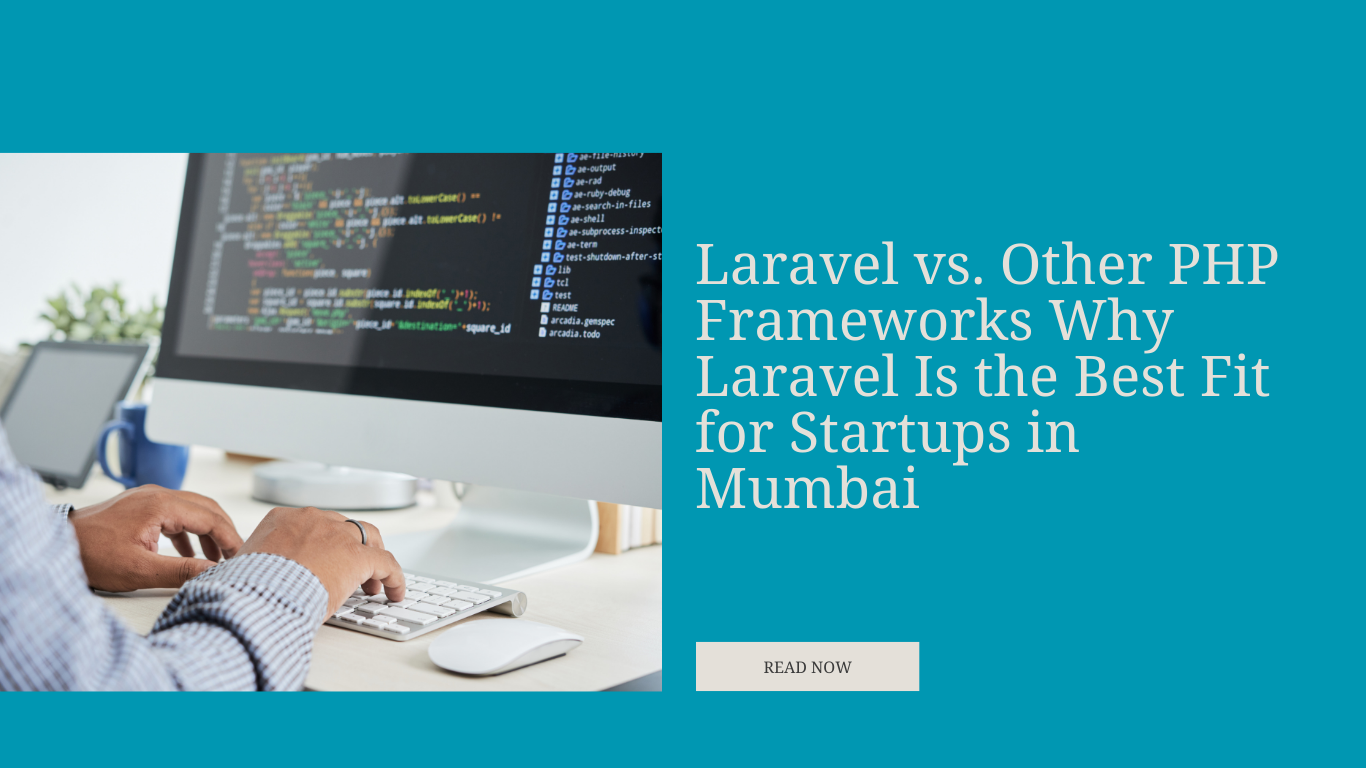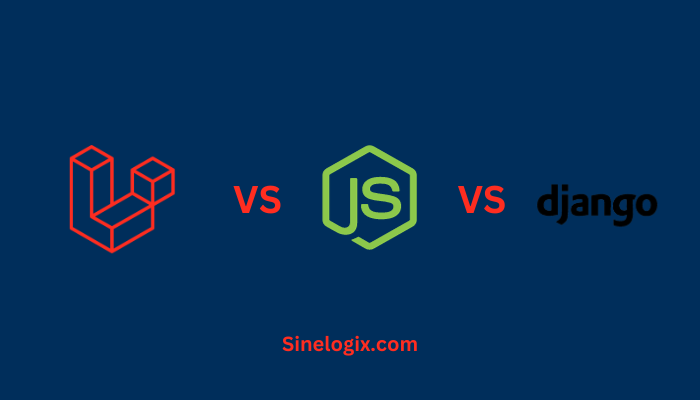In the dynamic realm of web development and e-commerce, Laravel and WooCommerce emerge as powerful players, each catering to distinct facets of online business.
Laravel, a PHP web application framework, offers a robust foundation for custom application development. WooCommerce, on the other hand, is a prominent e-commerce plugin for WordPress, designed to seamlessly integrate with the popular CMS.
In this comprehensive comparison, we delve into the unique features, use cases, and considerations when choosing between Laravel and WooCommerce.
Overview of Laravel and WooCommerce
Laravel: Laravel stands as a PHP framework renowned for its elegant syntax, modern features, and rapid development capabilities. Following the Model-View-Controller (MVC) architectural pattern, Laravel provides tools for routing, templating (Blade engine), and Object-Relational Mapping (ORM) through Eloquent. Laravel’s versatility makes it an ideal choice for building a wide range of web applications.
WooCommerce: WooCommerce is a widely-used e-commerce plugin for WordPress, providing a comprehensive solution for creating online stores. Developed by Automattic, the company behind WordPress, WooCommerce seamlessly integrates with the CMS, transforming a standard website into a fully functional e-commerce platform. WooCommerce empowers users to manage products, process transactions, and customize the shopping experience.
Use Cases and Target Audience
Laravel: Laravel is well-suited for custom web application development, making it an excellent choice for businesses and developers seeking to create bespoke solutions. It caters to a broad audience, including individual developers, startups, and large development teams working on diverse projects. Laravel’s clean code, MVC architecture, and extensive ecosystem make it adaptable to projects of varying complexity.
WooCommerce: WooCommerce is specifically tailored for businesses looking to establish an online store within the WordPress ecosystem. It caters to users who prioritize the simplicity of integrating e-commerce functionality into their existing WordPress websites. WooCommerce’s target audience includes small to medium-sized businesses, entrepreneurs, and individuals aiming to sell products or services online.
Integration and Collaboration
Laravel: While Laravel itself is not an e-commerce platform, it can be integrated with various e-commerce solutions, including custom-built systems or third-party platforms. Laravel can serve as the backend for e-commerce applications, handling business logic, database interactions, and API integrations. Integration with payment gateways and other e-commerce features can be implemented using Laravel.
WooCommerce: WooCommerce seamlessly integrates with WordPress, serving as an extension to the CMS. The collaboration between WooCommerce and WordPress allows users to leverage the content management capabilities of WordPress alongside powerful e-commerce features. WordPress themes can be tailored to match the branding of the online store, providing a cohesive and customizable user experience.
Learning Curve and Development Experience
Laravel: Laravel’s learning curve is considered moderate, especially for developers familiar with PHP and MVC frameworks. The framework provides comprehensive documentation, tutorials, and a supportive community. Laravel’s Artisan command-line tool streamlines common tasks, enhancing the development experience. Developers appreciate Laravel’s expressive syntax, which contributes to writing clean and maintainable code.
WooCommerce: WooCommerce is designed with user-friendliness in mind, making it accessible to users with varying levels of technical expertise. The plugin integrates seamlessly with the familiar WordPress dashboard, simplifying product management, order processing, and store customization. WooCommerce’s development experience is optimized for users who prefer a straightforward approach to setting up and managing an online store.
Community and Support
Laravel: Laravel boasts a vibrant and active community that contributes to its growth and improvement. Forums, social media groups, and platforms like Laracasts provide avenues for developers to seek help, share knowledge, and stay updated on Laravel’s latest developments. Regular updates, security patches, and the ecosystem of third-party packages showcase the community’s commitment to Laravel’s ongoing success.
WooCommerce: WooCommerce benefits from the extensive WordPress community, one of the largest and most active in the web development sphere. The community includes developers, designers, store owners, and enthusiasts. Users can find support through forums, tutorials, and community-contributed plugins. The vast ecosystem of themes and extensions further enhances WooCommerce’s capabilities.
Performance and Optimization
Laravel: Laravel’s performance is influenced by various factors, including server configuration, database optimization, and the efficiency of written code. The framework provides tools for caching, queuing, and optimizing database queries. Laravel Mix aids in asset compilation and minification, contributing to improved frontend performance. Laravel’s performance is generally suitable for a wide range of web applications.
WooCommerce: WooCommerce’s performance can be influenced by factors such as the choice of hosting, the complexity of the store, and the number of products. Optimizing images, using a caching solution, and implementing content delivery networks (CDNs) are common practices to enhance WooCommerce’s performance. Users can also benefit from specialized hosting providers that cater to WooCommerce stores.
Customization and Theming
Laravel: Laravel provides a high level of customization through its Blade templating engine and the ability to create reusable components. Developers can design and implement custom layouts, views, and components to tailor the frontend presentation according to project requirements. Laravel Mix further facilitates customization by allowing developers to manage and compile frontend assets effortlessly.
WooCommerce: WooCommerce offers extensive customization through themes and plugins. Users can choose from a wide range of WooCommerce-compatible themes to define the store’s appearance. Custom themes can be created to match specific branding requirements. Additionally, the WooCommerce plugin architecture allows for the integration of custom functionalities and third-party extensions to enhance store features.
Mobile Responsiveness
Laravel: Laravel itself is agnostic to frontend responsiveness, as it primarily focuses on backend development. However, when combined with a responsive frontend framework or libraries, such as Bootstrap or Vue.js, Laravel applications can easily achieve mobile responsiveness. Laravel’s API-centric approach facilitates the development of mobile applications that interact with the backend.
WooCommerce: WooCommerce is designed to be responsive out of the box. WooCommerce-compatible themes are crafted to ensure a seamless shopping experience across various devices, including smartphones and tablets. Users can choose mobile-friendly themes or implement responsive design practices to optimize the mobile user experience.
Security Considerations
Laravel: Laravel places a strong emphasis on security, offering features such as built-in protection against Cross-Site Scripting (XSS) and Cross-Site Request Forgery (CSRF) attacks. The framework encourages best practices in secure coding and provides tools like Laravel Sanctum and Laravel Passport for API authentication and token management. Laravel’s commitment to security makes it a reliable choice for building secure web applications.
WooCommerce: Security in WooCommerce is essential, given the sensitive nature of e-commerce transactions. Regular updates, secure hosting, and the use of reputable themes and plugins contribute to a secure WooCommerce store. Users are encouraged to follow best practices, such as implementing SSL certificates, conducting security audits, and using secure payment gateways.
SEO-Friendly Routing and URLs
Laravel: Laravel’s routing system allows developers to create clean, SEO-friendly URLs. The framework’s expressive routing syntax and the ability to define named routes contribute to building URLs that are both human-readable and optimized for search engines. Laravel’s approach to routing enhances the overall SEO performance of applications.
WooCommerce: WooCommerce, being part of the WordPress ecosystem, inherits the SEO-friendly nature of the CMS. Users can customize permalinks, product URLs, and meta tags to optimize the store for search engines. SEO plugins, commonly used with WordPress, can further enhance WooCommerce’s SEO capabilities by providing tools for content analysis, XML sitemap generation, and meta tag optimization.
Related Articles:
Conclusion
In conclusion, the choice between Laravel and WooCommerce hinges on the specific needs and goals of an online project.
Laravel shines in custom web application development, offering a robust PHP framework with a focus on code elegance, rapid development, and versatility. When integrated with e-commerce functionalities, Laravel provides a solid foundation for building bespoke online stores with tailored features.
WooCommerce, on the other hand, is a dedicated e-commerce solution seamlessly integrated into the WordPress ecosystem. It caters to users who prioritize a user-friendly and familiar environment for managing an online store. WooCommerce’s extensive theme and plugin ecosystem, coupled with WordPress’s content management capabilities, make it an ideal choice for those looking to quickly establish an e-commerce presence.




